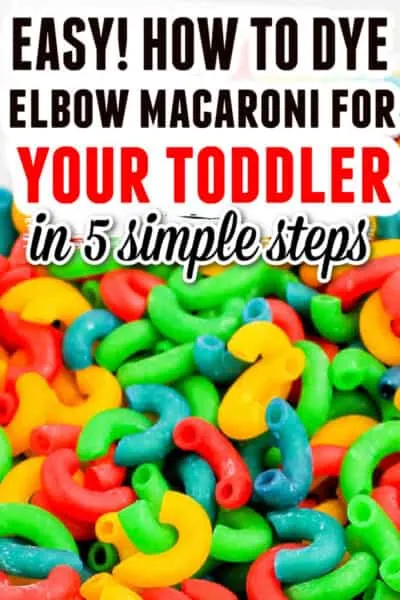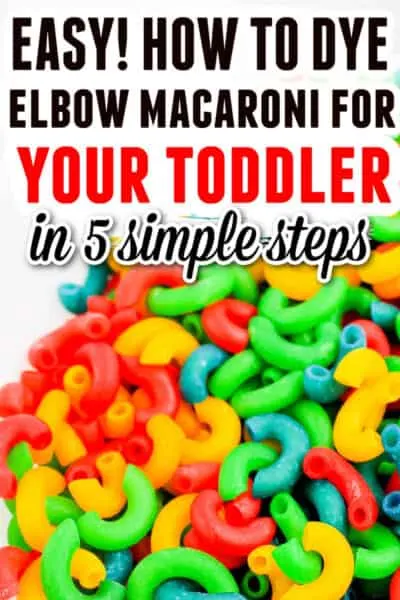Updated August 3, 2022
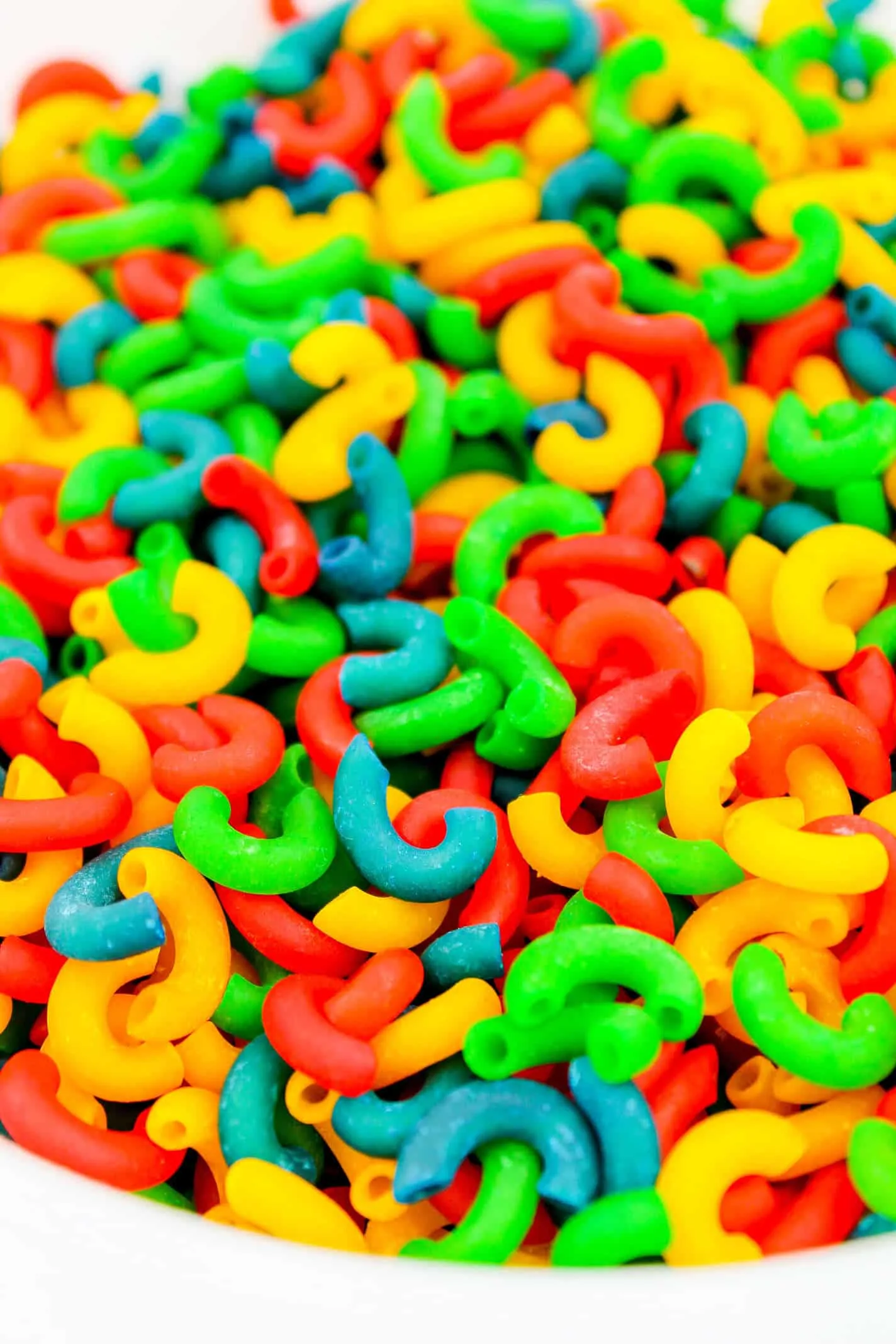
Are you wondering how to dye elbow macaroni for your toddler?
We’ve got your answer! Dyeing pasta for sensory bins or other toddler activities is an easy and budget-friendly option we use all the time.
It isn’t difficult to do at all.
You probably have everything you need to color pasta at home.
This is a classic preschool teacher skill. Colored pasta is one of the most versatile items you can have one hand to engage a bored toddler or preschooler.
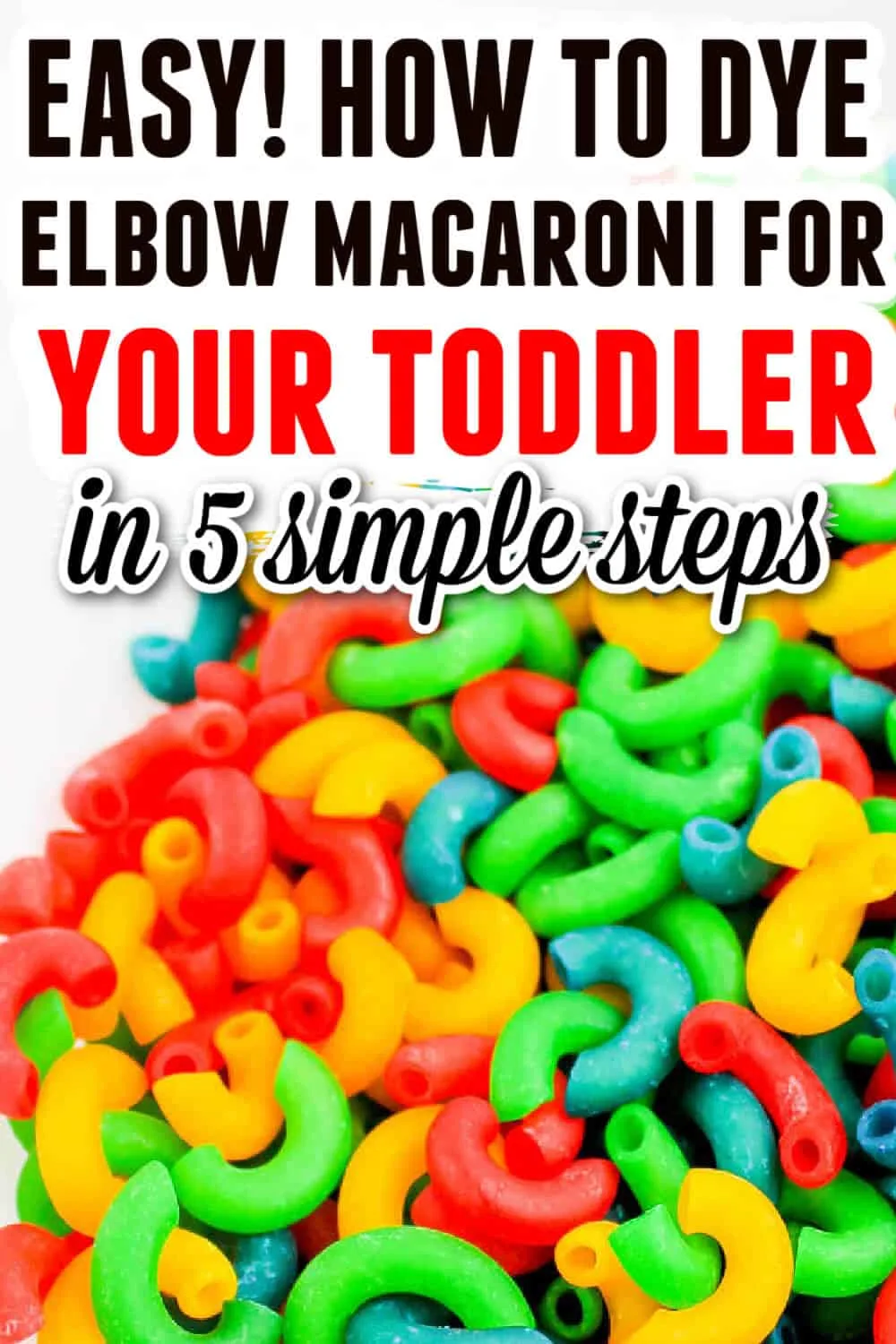
You can use it year-round in a variety of toddler activities.
[wps_alert type=”note”][wps_icon icon=”check” background=”#31b522″ color=”#ffffff” size=”19″ padding=”6″ radius=”0″]Tip: In the summer put it in the refrigerator before filling your sensory bin and it will be a cool treat your toddler will love![/wps_alert]
Having dyed macaroni ready to go has saved many a rainy day at the beach with our toddlers and saved our sanity as parents.
Colored uncooked pasta will keep for months in a ziplock bag or food storage container.
You can use it over and over again.
How to Dye Elbow Macaroni Noodles
Supplies:
1 box macaroni noodles or elbows. You can dye any type of pasta.
Rubbing alcohol or plain white vinegar (Use vinegar if your pasta is cooked and you plan on eating it)
4 Plastic zipper baggies
Tray lined with a paper towel (for drying). You can use parchment paper too.
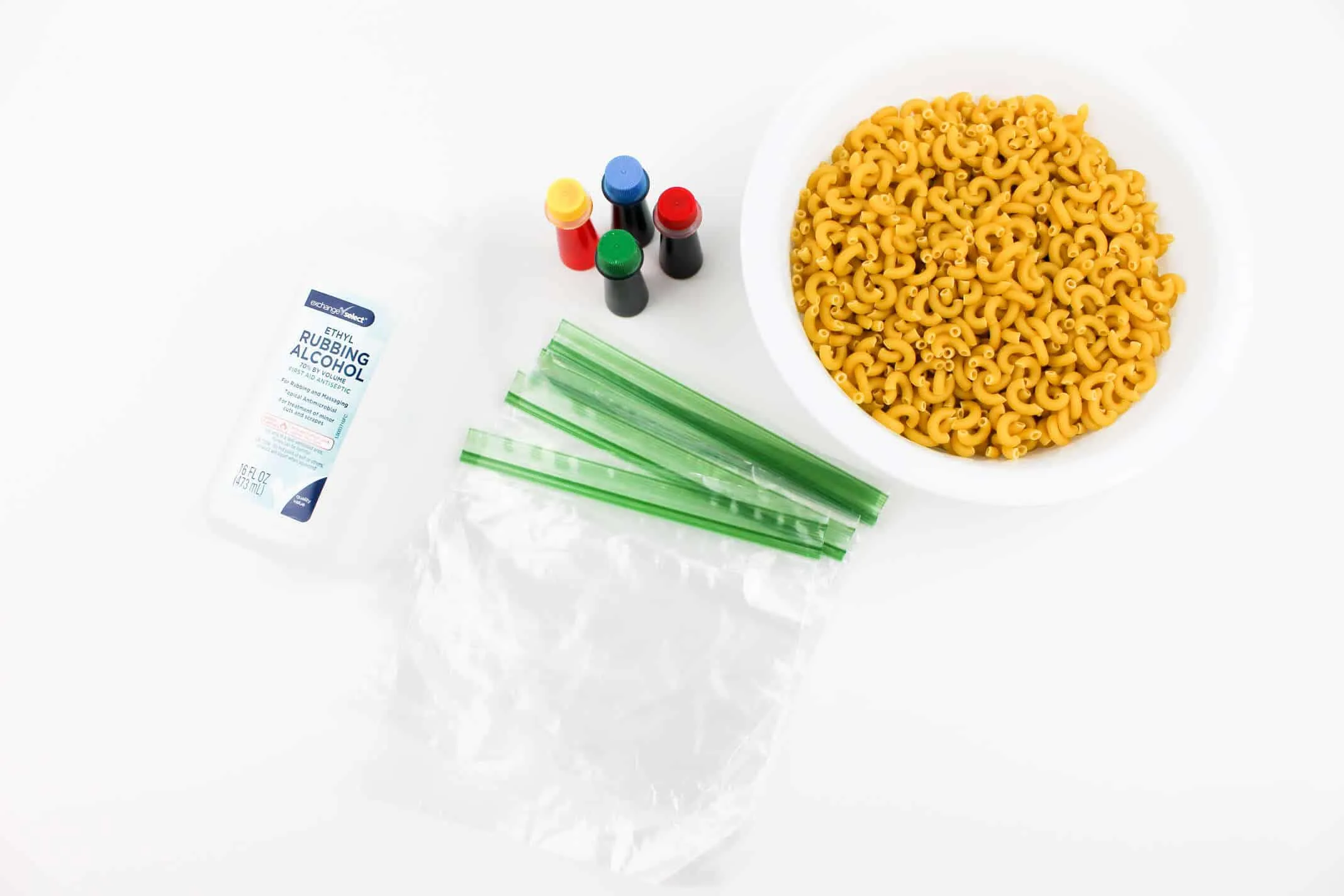
Directions:
Add 1 cup of macaroni to each zipper bag. Do not seal the bags.
You can also use 2 cups of macaroni without needing to increase the rubbing alcohol amount.
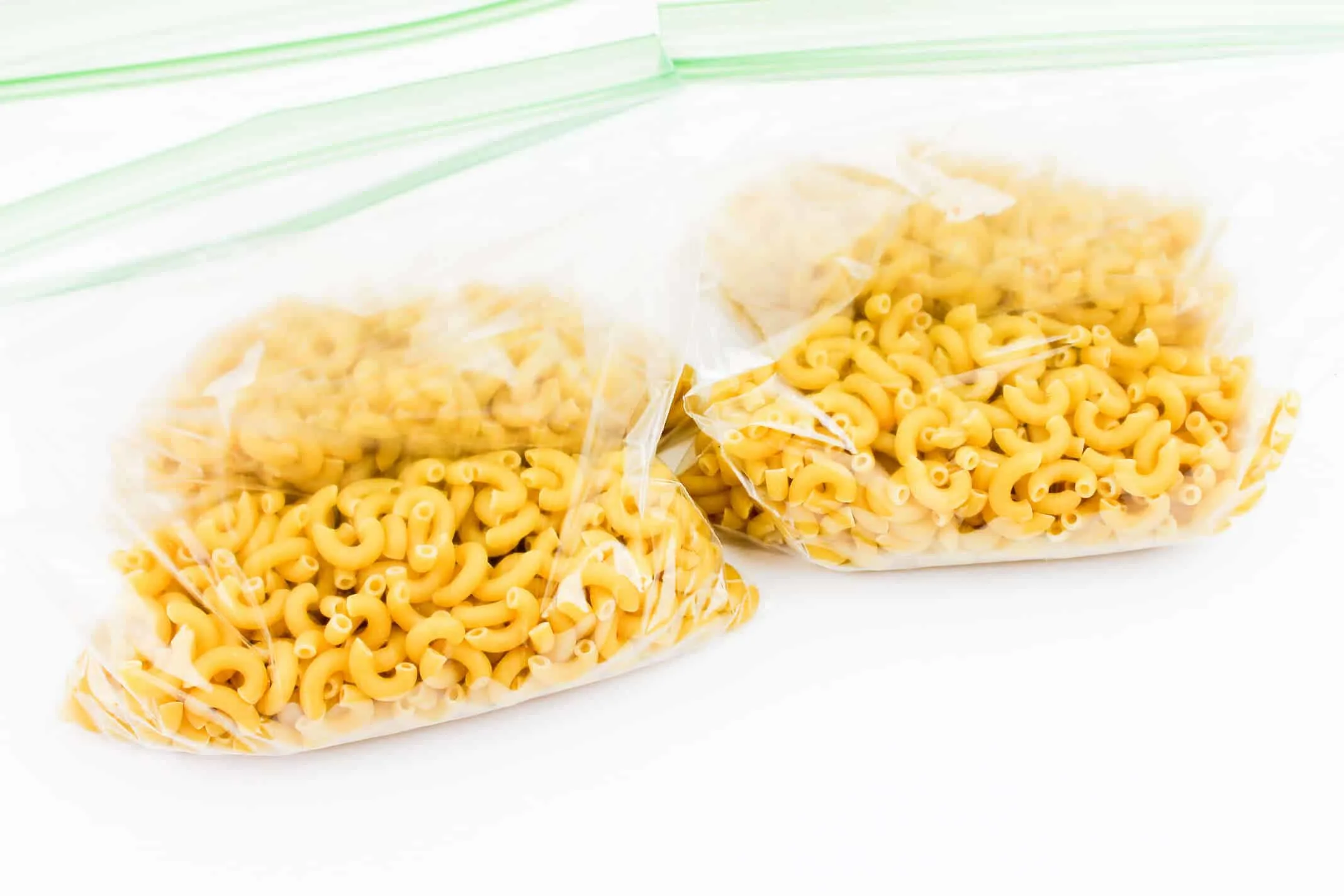
Pour in 1 tbsp. Rubbing alcohol into each bag.
You can also use 1 tbsp of vinegar in place of the rubbing alcohol.
If you plan to eat your colored pasta use vinegar instead of rubbing alcohol.
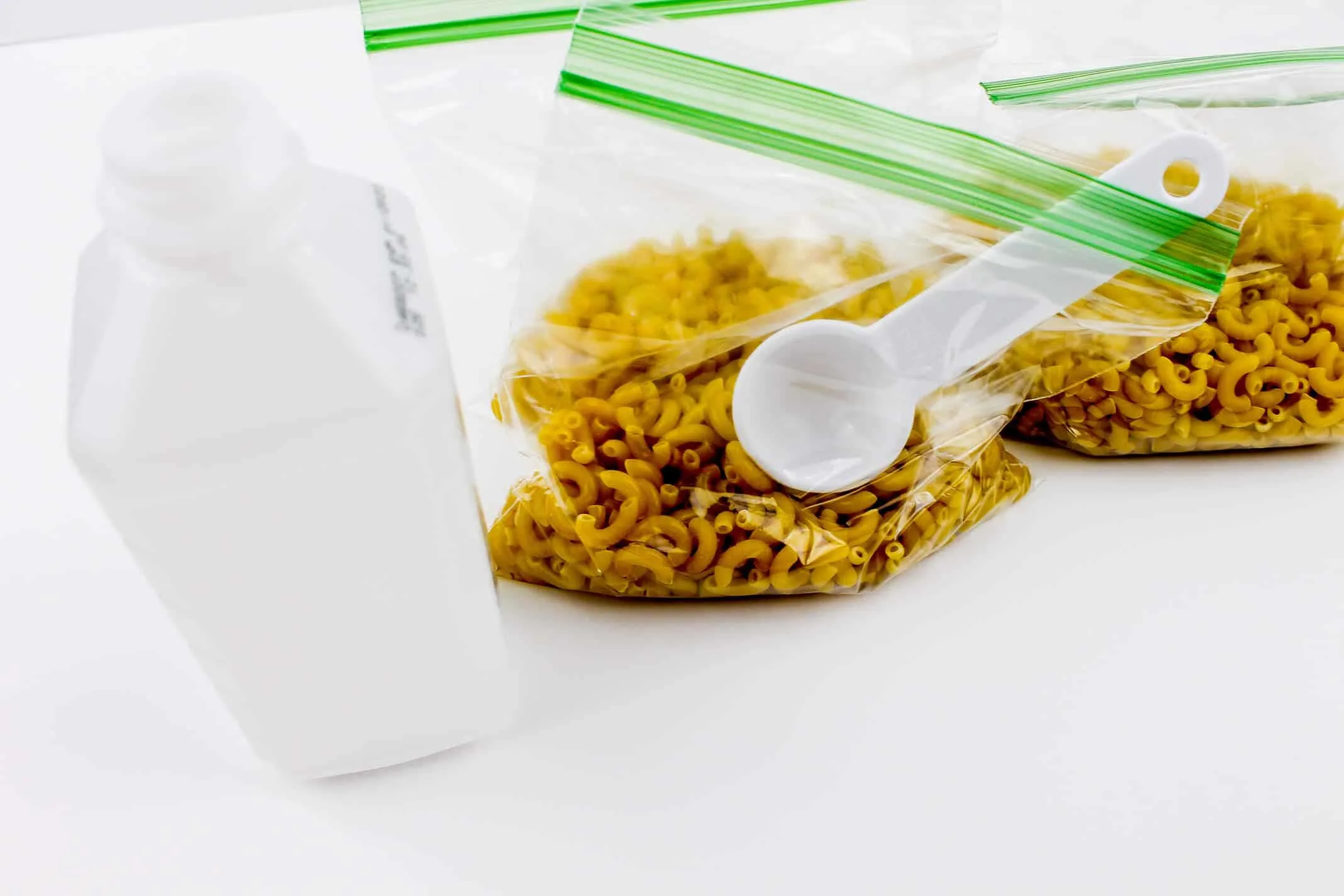
Drop 12-20 drops of food coloring into each bag.
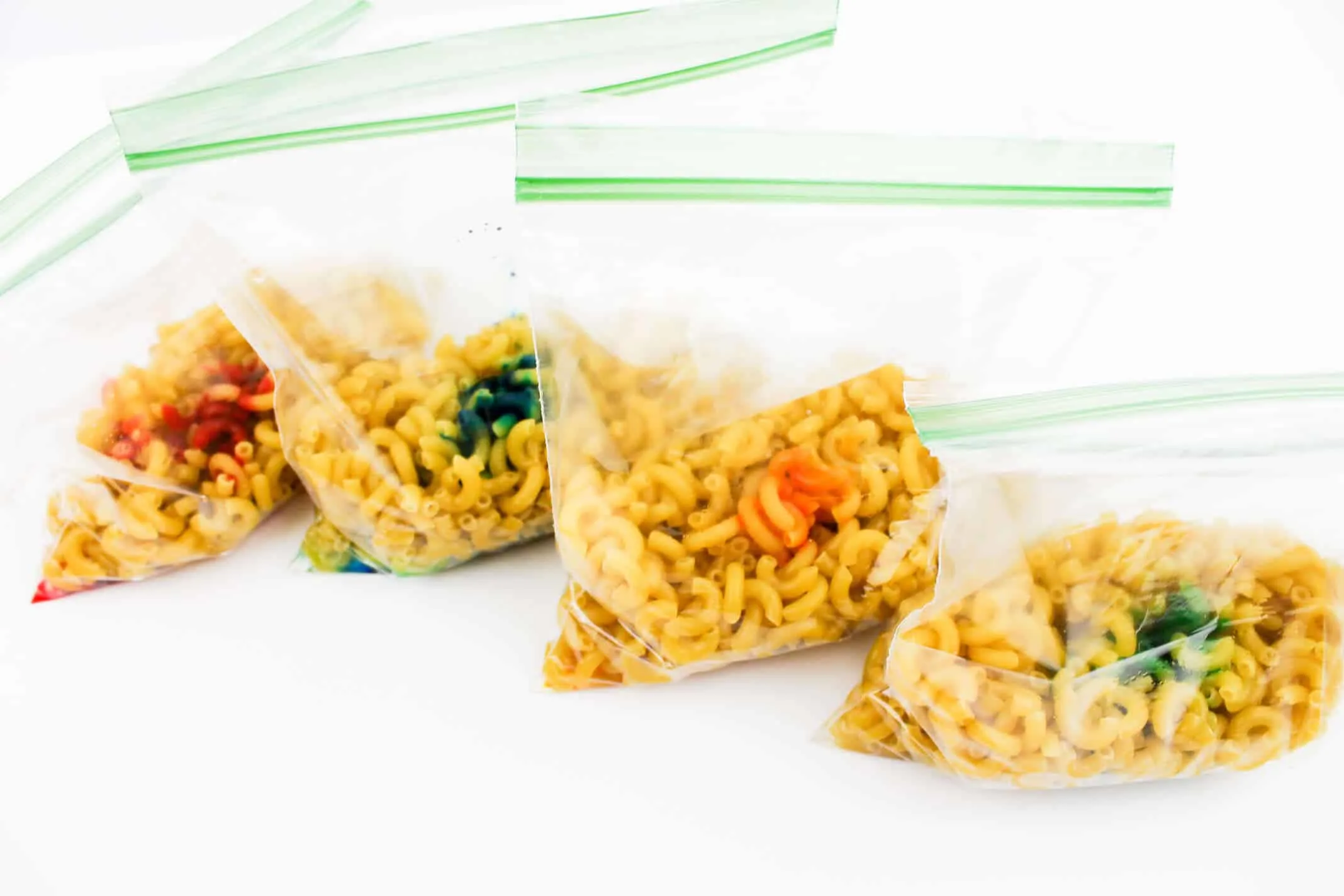
For this activity, we used red, yellow, green, and blue food coloring.
Seal the bag well, making sure no contents will fall out. If you’d like, you can double bag to prevent spills.
I found when I was trying the different how to dye elbow macaroni recipes out there that doubling the bag was an important step to avoid any food coloring leakage.
Using your hands, mix the macaroni around in the bag until all macaroni is colored evenly.
You can adjust the brightness of the color by adding more food coloring.
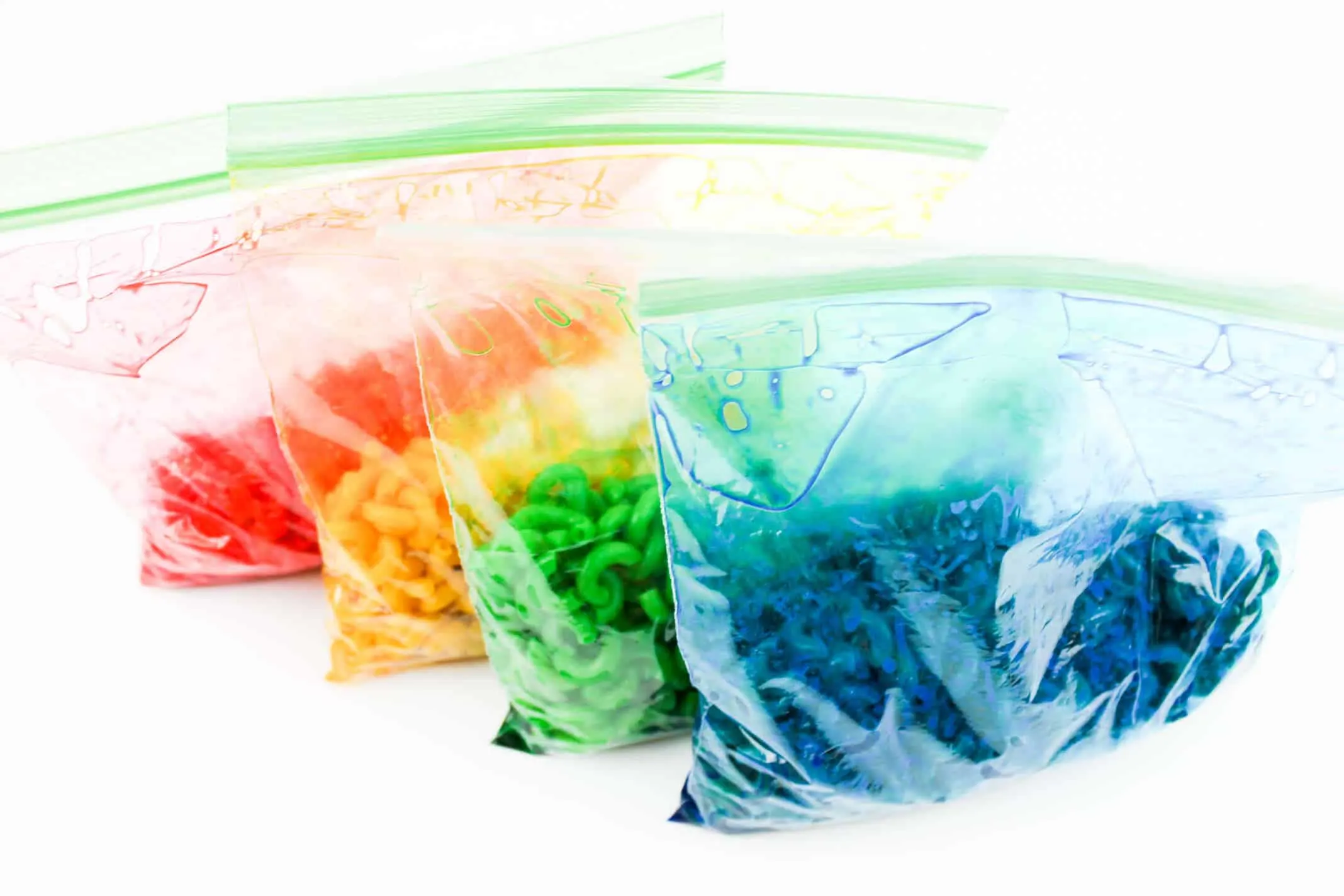
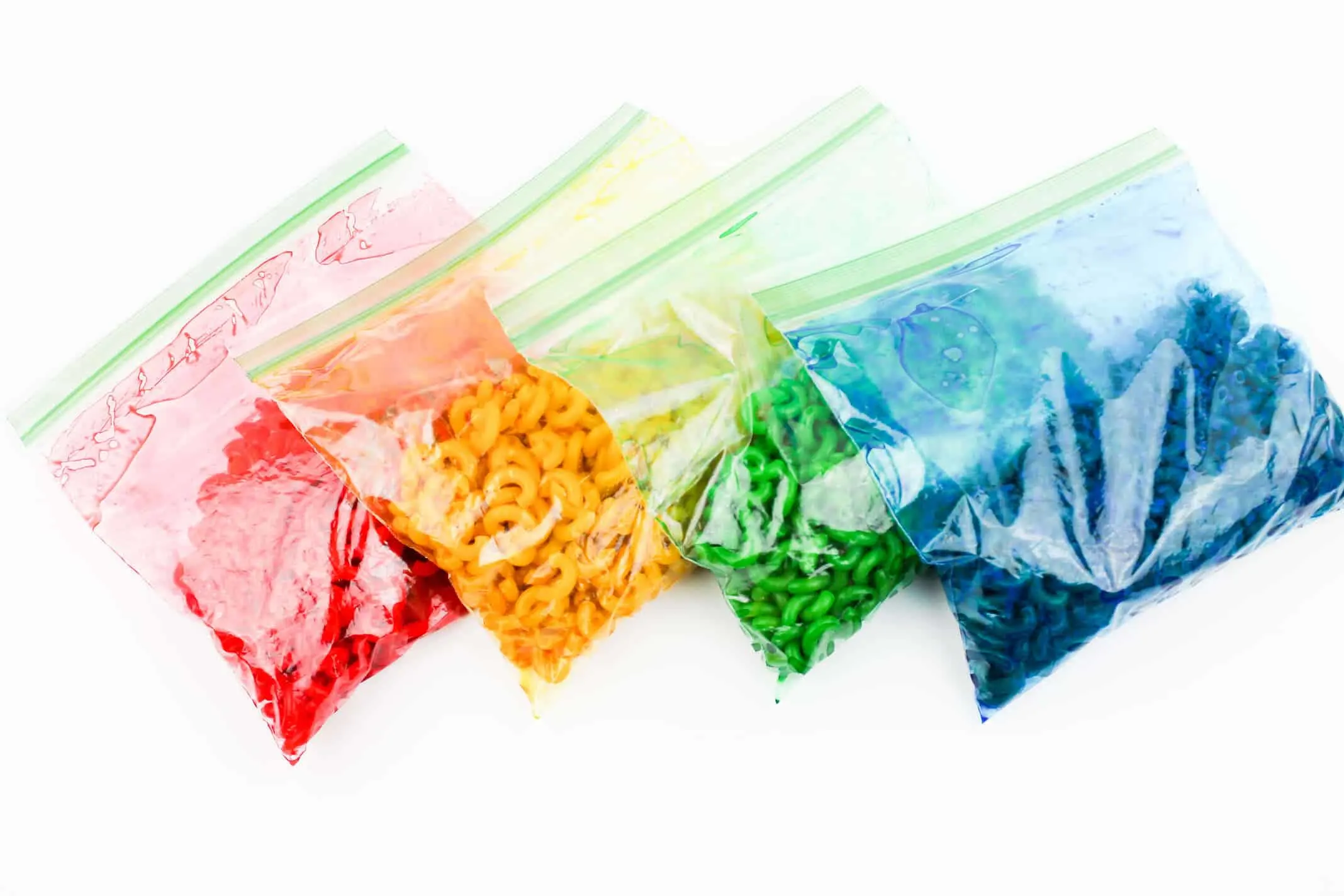
Open the bag and pour each color of macaroni onto a drying tray to dry.
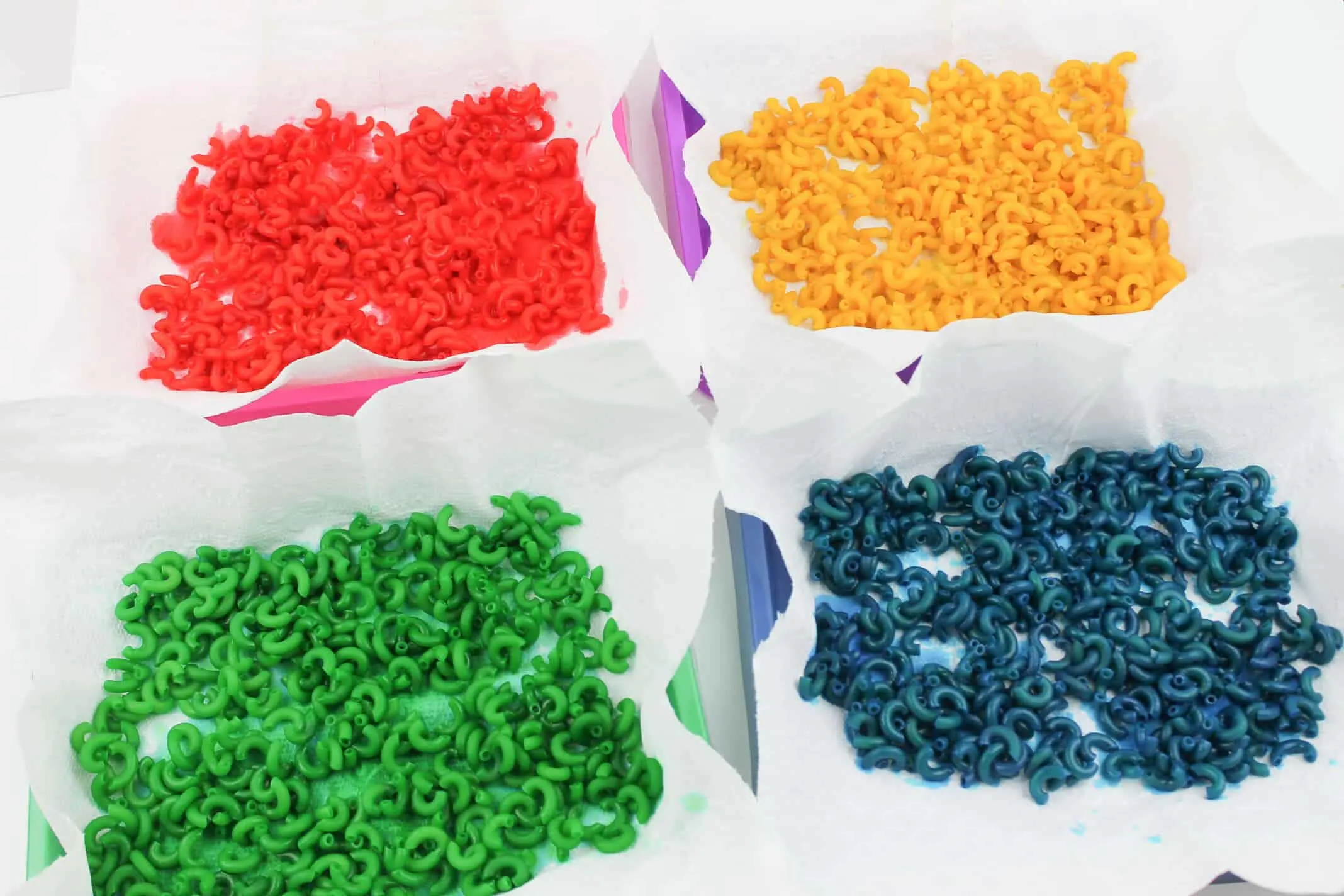
Check on the macaroni noodles during the drying process and stir around to make sure the noodles are drying properly. (Drying time: several hours to overnight)
[wps_alert type=”note”][wps_icon icon=”check” background=”#31b522″ color=”#ffffff” size=”20″ padding=”6″ radius=”0″]One tip with the pasta: To speed the drying time put the colored pasta in the oven for 10 minutes at 250 degrees.[/wps_alert]
It helps the color set a little faster.
Allow noodles plenty of time to dry before use.
Mix noodles when ready.
I have used the colored pasta to make a spring bug sensory bin, a garden sensory bin, a farm sensory bin, and ocean-themed sensory bins.
You can cook the pasta and color it once it is cooked.
Remember to use vinegar in place of rubbing alcohol if you intend to eat the pasta.
We have done this for Halloween sensory bins and Halloween Mac and Cheese.
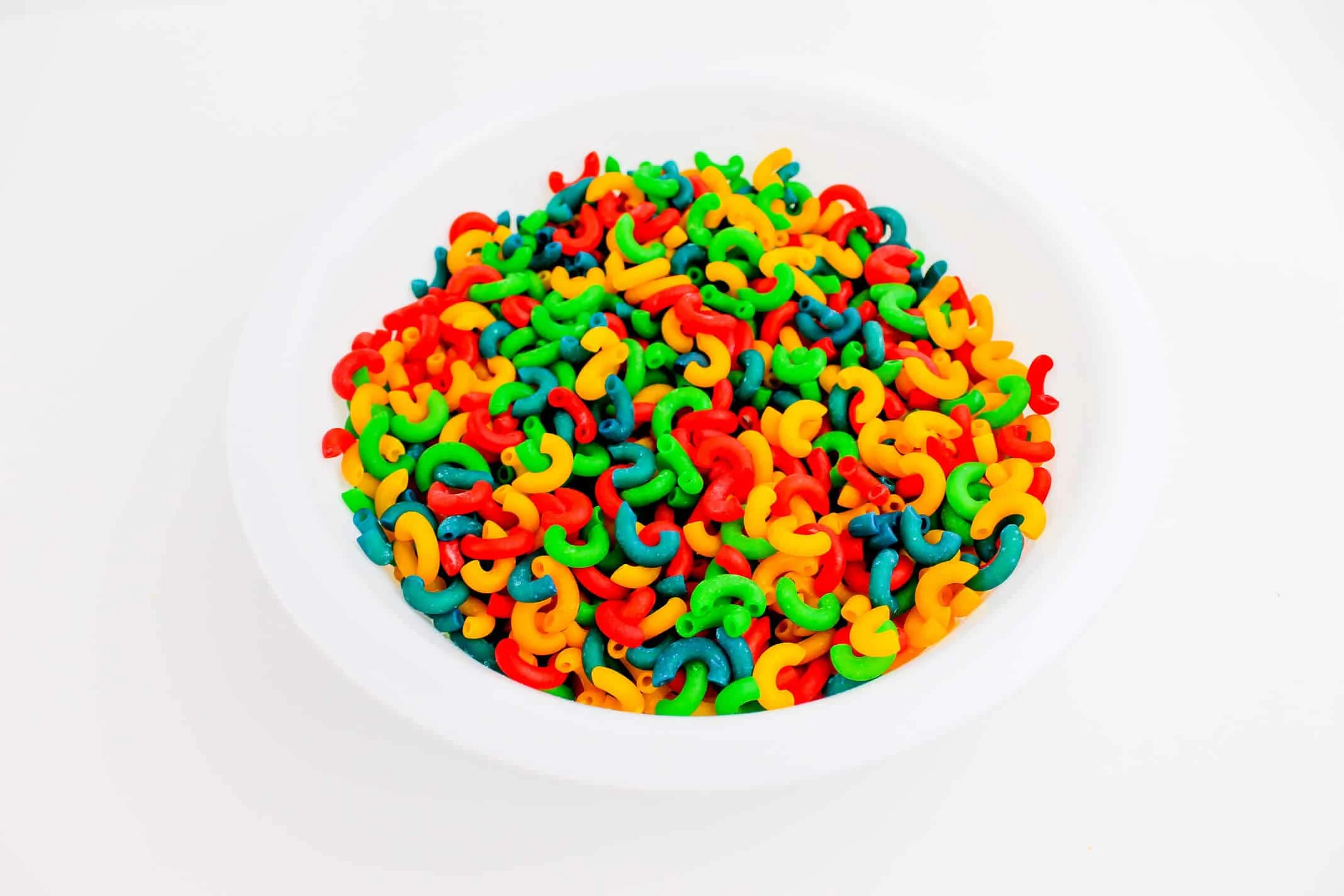
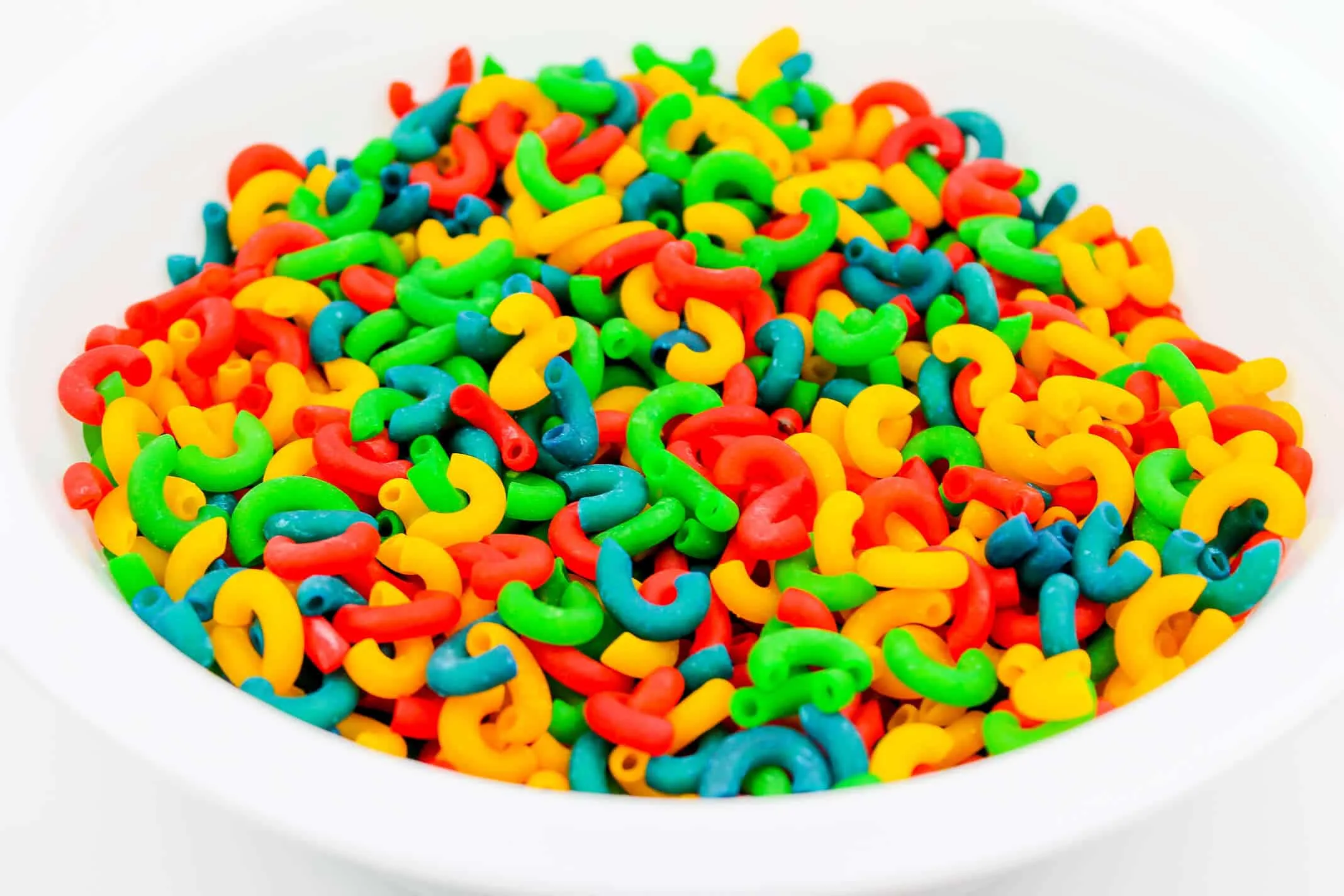
Now that you know how to dye pasta for your toddler, your ability to create sensory play opportunities is virtually endless.
If you need some inspiration these are some of our favorite sensory play activities to do with toddlers.
Related: 20 Easy Easter Sensory Bins For Toddlers
Related: 9 Easy DIY Sensory Bins For Toddlers
Related: 5 Brilliant Summer Bug Sensory Bin Ideas for Toddlers
What is sensory play?
Sensory play is any activity that engages a young child’s five senses. So activities that involve the sense of smell, touch, hearing, sight, taste, and movement fall under the umbrella of “sensory play”.
Sensory activities play a crucial role in brain development and research suggests that opportunities for pretend play are necessary to help develop self-regulation of behavior and empathy.
Toddlers learn about the world around them through their senses. It is how they learn about their bodies and their environment.
They learn to trust through touch at this stage of development.
Sensory play encourages exploration and introduces the child to the basics of the scientific method.
Sensory play helps with the development of both fine and gross motor skills, language development, and problem-solving skills.
One of the reasons I really love sensory activities for young children is that it encourages free and open-ended play.
Open-ended play is play with no set outcome, no expectations, no prodding, or feeding of ideas.
The child is free to explore, create and imagine whatever they want.
They learn to trust themselves, their internal motivations and learn to self-validate their own experiences.
In my experience as both a parent and former early childhood educator, you can’t fail with providing lots of opportunities for sensory play.
We love to tie sensory play into literature. The rainbow pasta we dyed above was for a theme on rainbows.
Your child might enjoy these books about rainbows before you introduce the colored pasta.
[content-egg module=Amazon template=grid next=3 hide=price cols=3]
It doesn’t have to be expensive or even time-consuming. My mom’s motto is “It needs to be simple or it’s not happening.”
You can buy tons of fillers for your sensory bin ideas.
The ones below are ones you can easily and cheaply make at home.
Most of the toys you’ll see included as “ideas” are just simple dollar-store toys or toys we had kicking around the house.
None of the bins I made below took more than 30 minutes in total to make.
I sped up the drying time for the colored pasta, rice, and beans by putting them in the oven on Bake at 250 degrees for 10 minutes.
Let them cool down and you are good to go. They did not bleed any color once they were dry.
Don’t be afraid to get creative with your ideas! The idea is to give your child the opportunity to engage all five senses in a fun and educational way.
The possibilities and combinations for sensory play and sensory bin ideas are almost endless.
[wps_youtube_advanced url=”https://youtu.be/Edw-piedlV4″ width=”600″ height=”400″ controls=”alt” autohide=”alt” showinfo=”yes” autoplay=”no” loop=”no” rel=”no” fs=”yes” modestbranding=”no” responsive=”yes” https=”no” wmode=”transparent”]
We hope you found this recipe for dyeing macaroni easy to follow.

